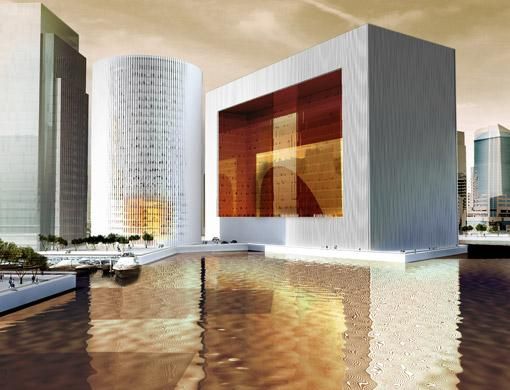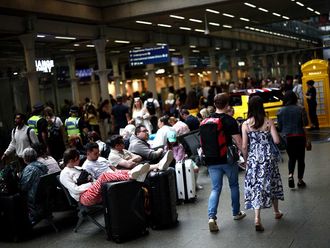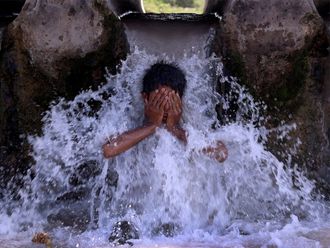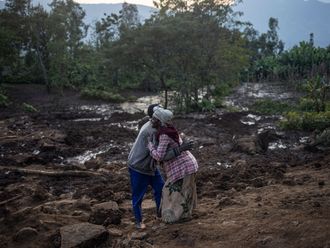Architects make their mark on the emirate's skyline with stand-out designs.
Dutch architecture is typified by its modern approach to form and living, by its attention to detail, urban interactivity and participation. Creations of Berlage, Dudok, Rietveld, Herzberger and Rem Koolhaas have been iconic structures in several cities (for instance, Berlage's Holland House in London, Herzberger's floating houses in the Netherlands and Priztker Prize winner Koolhaas' Seattle Public Library in the US). Now Dubai, as a growing centre of urban experimentation as well as one of the world's fastest growing metropolises, is all set to experience some spectacular Dutch architectural masterpieces.
For a growing number of Dutch architects, Dubai is the perfect testbed. Its strategic location, smart property legislation and virtual green field site have given several Dutch architects the freedom to realise complex challenges. Dutch architect-author-design guru Rem Koolhaas' Rotterdam-based Office for Metropolitan Architecture (OMA) has been in the news for creating the masterplan for the proposed 1.5-billion-square-foot Waterfront City on the western edge of Dubai that could become as big and dense as Manhattan. Also creating headlines have been Paul Van de Camp's company Dutch Docklands for its floating islands concept, Zwarts and Jansma for its design of the new RTA headquarters on an artificial lake in Dubai, Royal Haskoning for its iconic bridge for Palm Jebel Ali and the Public Water Transport System in Dubai and Rem Koolhaas and Fernando Donis' collaborative design of the Porsche Design Towers at Business Bay.
Contemporary architecture
According to Professor George Katodrytis, Associate Professor of Architecture at the School of Architecture and Design, American University of Sharjah, "The influence that contemporary Dutch architecture may have on Dubai's development is interesting. Dutch architecture is clearly recognised by modernity and clarity of forms and shows no interest whatsoever to reenact thematic or historic styles. This contemporary and progressive approach may add the much-needed element of modernism to a city like Dubai, which is torn between constructing a modern metropolitan lifestyle and recreating its past. Also, the flat Dutch landscape and its relation to survive against rising water levels have generated an efficient architectural language that may be linked to Dubai's flatness of land and its desire to conquer the water."
Paul van de Camp, CEO of Dutch Docklands, says, "In the Netherlands we have a lot of experience in working with water and we have been using that to innovate new solutions to build on water. But instead of inserting these innovations in the Netherlands it is Dubai which embraces these ideas as a part of their solutions in major projects like The Palm and The World."
According to van de Camp, Dutch architecture is changing the face of Dubai by pushing projects beyond the waterfront and searching for the perfect symbiosis between creativity and technology. "Dubai teaches us that the built world around us can be changed if you want it to and that challenge pushes technology to a higher level. A rise in sea level will have its influence worldwide, so also in Dubai. Our floating architecture is ready for the most pessimistic scenarios in the coming centuries. We believe that by building on floating foundations you are also in closer contact with nature than with houses on land," says Van de Camp. Dutch Docklands has also come up with the concept design of the floating cruise terminal, ready to berth four of the largest cruise ships at the same time.
Ole Bouman, Director of the Netherlands Architecture Institute, says that Dubai has, indeed, adopted the global trend of sustainable architecture. "When there is so much liquidity of capital, it is interesting to see what it means for architecture. The idea must now be not to create islands of architecture, but a real city. The city must not become an enemy of its architecture (and vice versa). Dutch architects are strong in conceptual thinking. In the 17th and 18th centuries the Netherlands was like Dubai (a hub of commerce and trade in Europe). So there is a lot of experience that the country can share with Dubai. For years the Dutch have addressed environment issues, creating land out of nothing. Today Dubai is responding to similar issues of sustainability and Dutch architects can help to address these issues smartly."
Issues of sustainability
Commissioned by Nakheel in 2007, OMA's masterplan for Dubai's Waterfront City addresses the issues of sustainability. To limit carbon emissions, buildings will be sited close together on tree-lined streets to encourage people to walk rather than drive. Moreover the tall, dense buildings will create natural shading that reduces the need for artificial air conditioning.
While Dubai has seized every opportunity to embrace changes and new technologies for a better future, it has also given architects the freedom to experiment. Rein Jansma, Founding Director of Zwarts and Jansma says, "Around the Gulf things are happening so fast that we have to rethink a lot of things. The fascination lies in the huge and unique chances that Dubai presents. We are challenged to go further."
The RTA Headquarters designed by Zwarts and Jansma will stand as a watchtower overlooking the natural beauty of the Dubai Creek and the green zone of the Festival City. The crossing of waterways, highways and subways has been a key factor in the development of both the architectural concept and the landscaping. Among its other projects, Zwarts and Jansma has also designed the 525-metre Emirates 1001 Hotel, a landmark for travellers with its 1,001 rooms, leisure and conference centre and the Unicorn, a tower based on the horn of the mythical unicorn providing office space for companies.
According to Syb Van Breda, Director of Architecture, Royal Haskoning, "Dubai is now reaching a new level where the quality of life has to keep up with the promises made.
A further densification and diversification of the city's facilities are needed, such as a refined network of public transport, space for the pedestrian rather than the vehicle, cultural facilities such as museums, theatres and galleries and much more attention to the environment. Royal Haskoning Architects are specialised in these complex challenges where urban planning, architecture, engineering and environmentally sustainable issues come together. It is our prime selling point in this country."
Iconic bridge
Royal Haskoning's Iconic Bridge for Palm Jebel Ali is all about creating an urban focus point that is visible from all around. "This bridge aims at becoming an icon in the city, just like the Brooklyn Bridge, the Golden Gate Bridge and the Erasmus Bridge in other major cities around the world. The design of the bridge is an original blend of architectural and structural brilliance," said Van Breda.
The project for the Public Water Transport System in Dubai involves four ferry terminals on downtown locations along the Creek. All the terminals will have intricate connections with other modes of transport such as the Metro, bus terminals and taxi stands. "Our architecture is first and foremost about sustainability. The ferry terminals are a holistic sustainable design par excellence and are conceived with maximum use of natural shading, low energy use installations and optimum insulation," he said. The conceptual brilliance of Dutch architects promises to make Dubai a more sustainable city. Most of these designs reflect postmodernist architecture at its best, offering people a wide choice of commercial, retail and entertainment offerings and public amenities.
Once complete, as Professor Katodrytis says, the buildings will boost Dubai's collective confidence as a city "that never stops but rather seeks to survive and thrive".











_resources1_16a30b3523c_small.jpg)

